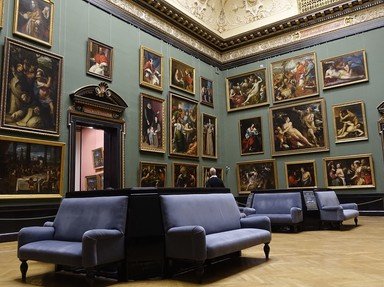
Where in the World Can I See These Paintings? Quiz
This quiz lists 10 works of art by different artists. It's up to you to identify the cities where they are on display. Have a good time.
A matching quiz
by masfon.
Estimated time: 3 mins.
- Home
- »
- Quizzes
- »
- Humanities Trivia
- »
- Art
- »
- Art: By Museum